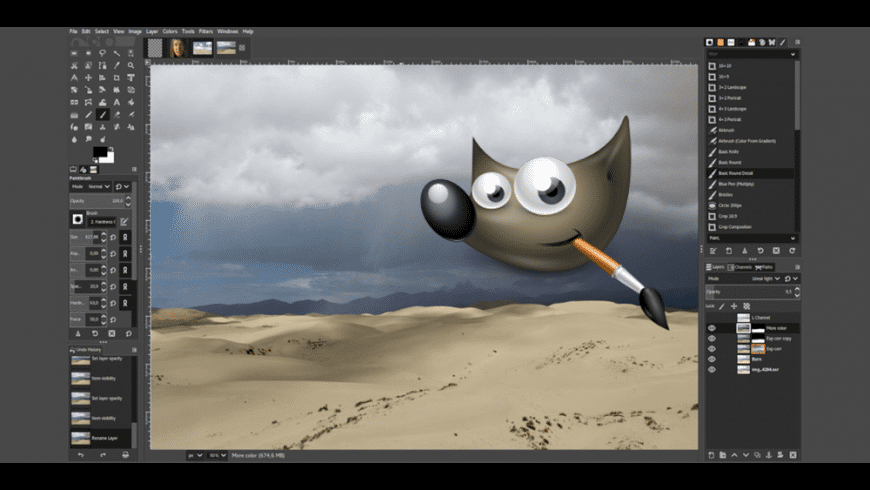Open Gimp > Click 'Gimp - 2.0' in the top left by the apple logo > select 'preferences' > on the left hand side of the preferences window drop down 'folders' > click 'plug-ins' > click '/Applications/GIMP-2.10.app/Contents/Resources/lib/gimp/2.0/plug-ins' > in the top rightish corner of the window there is a little gray looking file cabinet, click it and it will open a finder menu > click on the 'plug-ins' folder > right click on your finder icon in your toolbar and open a new finder window > navigate to your biggimpin.py file can right click to copy it from the newest finder window > go back to the finder window with the 'plug-ins' folder open and paste the file > quit the Gimp app and open it again > It should now show up in the top toolbar to the right of 'filters'.
Sorry for the wall of text but I wanted to give the exact steps as I am a Mac user and used to be an AppleCare Tech.
Please let me know if you have issues and I can try to help. I figured this out by doing some general googling.
if you want to see a video step by step I will link one below. Follow his instructions but just add the big gimpin file to the location he shows.
skip to 2:30 in the video to cut out the self promotion.
Cheers!




Gimp For Mac Catalina
Building Resynthesizer for GIMP 2.10.10 on macOS - V2. Feedback is welcome and appreciated. If you'd prefer to do things by hand check out Version 1 of this guide.; The following documents the steps I took to compile the latest version of Resynthesizer on macOS Sierra (10.12.6) for GIMP 2.10.10. Download the latest version of GIMP for Mac. Free and open-source software for creating and editing images. For several years now, GIMP (GNU Image Manipulation. Everything important at one glance: - Gimp 2.8 compatible with Windows and Mac - English version of Gimp - 20,000 clipart images - 10,000 photo frames - 900-page PDF manual (in English) System requirements: compatible with Windows 10, 8.1, 8, 7, Vista, XP (32 Bit/64 Bit) and Mac. GIMP is an acronym for GNU Image Manipulation Program. It is a freely distributed program for tasks such as photo retouching, image composition and image authoring. It is an amazing free alternative to Photoshop, which lets you edit your images. Hence, with these many advantages, everyone is supposed to have GIMP for Mac. The fact that GIMP, Inkscape, Krita, and so on, were all hit by this should help you understand: we had no early access to Catalina, Apple did nothing to warn even those big projects, much less ours, and even now, with Catalina in the wild, I'm missing (a). Hope that helps. Thanks for explaining.

